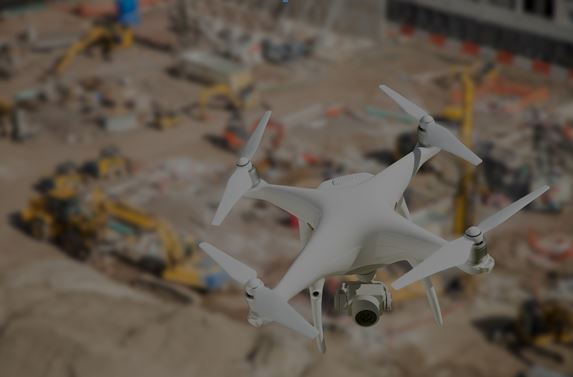The historical background of drones has drastically transformed in the recent years from a form of a weapon to an indispensable construction tool. The recognition of the tool in the industry has led to realization of immense developments and accomplishments in the sector. This has been quickened by their flexibility and portability as devices. It is no doubt that soon it will be impossible or extremely tedious to succeed in construction without involving a drone.
As confirmed by many multinational and giant investment organisations as well as groups, construction is expected to take a lion’s share in the use an application of commercial drones. This is because mapping and surveying of the construction sites entirely depends on drones. The claims are further backed up by spending trends by construction industry globally. For instance, it is estimated that of US $100bn expenditure on drones in two years’ time,about US $11.2bn will be sourced from the construction industry.
The drones have proved to be remarkably more than high-tech toys. Their crucial applications have turned around the visual understanding of business persons towards the drones. The commercial ones that have attracted attention include providing an edge among building competitors, saving of time for land developers during site surveys, and breaking barriers for inspectors examining inaccessible places. The drones have made it cheap and affordable to get an aerial view of a building.
Globally, it is impractical to start a construction work without carrying out a comprehensive inspection and survey of the site. Performing the two helps with the understanding of the progress of the building as well as the setting and implementing of safety standards during the construction process. Site inspection is now akin to a piece of cake thanks to drone technology. It is easy, cost-effective and interesting safe since employees do not have to walk near or in the hazardous surroundings. The practice can even be conducted from an office and the images a very clear and of high- resolution.
The drones make it possible to view a site in real-time by providing necessary information. The better part of this is that management of resources and tracking of the projects is made easier and better. All these can be accomplished under a roof without physically availing oneself at the site.
Time and resources like money are key in construction. The drone technology has extended its hand and gotten many contractors covered. Now, all that is required of the contractors is monitoring while at the same time analyzing the up-to-date imagery and data captured by the drones. Construction project planning allocates substantial amount of time in design. The drone offers the 3D modelling thus making the need to design, analyse or maintain a structure unnecessary.The communication and collaboration among involved parties, either onsite or offsite is kept intact. Thus to say, drones have a place in the field of construction.
Accidents and thefts are common occurrences in the construction sites. By the use of drones, accidents can be noticed or even to some extend avoided. Also, the surveillance of site against theft or destruction of property can be provided by drones on a 24/7 basis.
Prospects of drone
So far the ability of drones to change life has been amazing. However, people are finding it reasonable to take precautions in the attempt to impress them. This is a sure drawback to manufacture, market and exercise drones collectively. However, the civilians are not to blame but rather, to higher extend the governments through its legislative authorities.
A drone is not regarded as a free device in the environmental space. There are regulations outlining where and where not to fly the drones. For instance it is law-breaking to fly a drone near people or buildings. The enactment of the laws is due to the fact that the industry behind the manufacture is on rapid and alarming growth. This regulation has effected the commercialization as well as modernization of drones. Although it appears like regulations in some countries such as UK and US are a bit relaxed, commercial users still find it hard to fly the drones. In addition to place of operation, drones will only fly at an altitude of not higher than 120M and within the line of operator’s sight.
In many nations accountable authorities are anticipated to formulate more bills and regulations. Take UK for example, its Department for Transport is agitating for new safety precautions for drones outlined in the upcoming Drone Bill.Among precautions will be the registration of drones with a weight of over 250 grams.
Despite all the challenges encompassing the drones and the industry at larger, the future of drones remains bright. The drone adoption, generation of new products as well as technological innovations will grow. In fact, the future drones will be stronger, speedy travel long distance flyers. One of the sectors on the top of the list that will be disrupted is construction followed closely by business.
Author
PaeNatwilai, is the founder of TRIK, a former oil and gas inspection and maintenance engineer, who was named as one of the rising stars in the Forbes 30, under 30.

